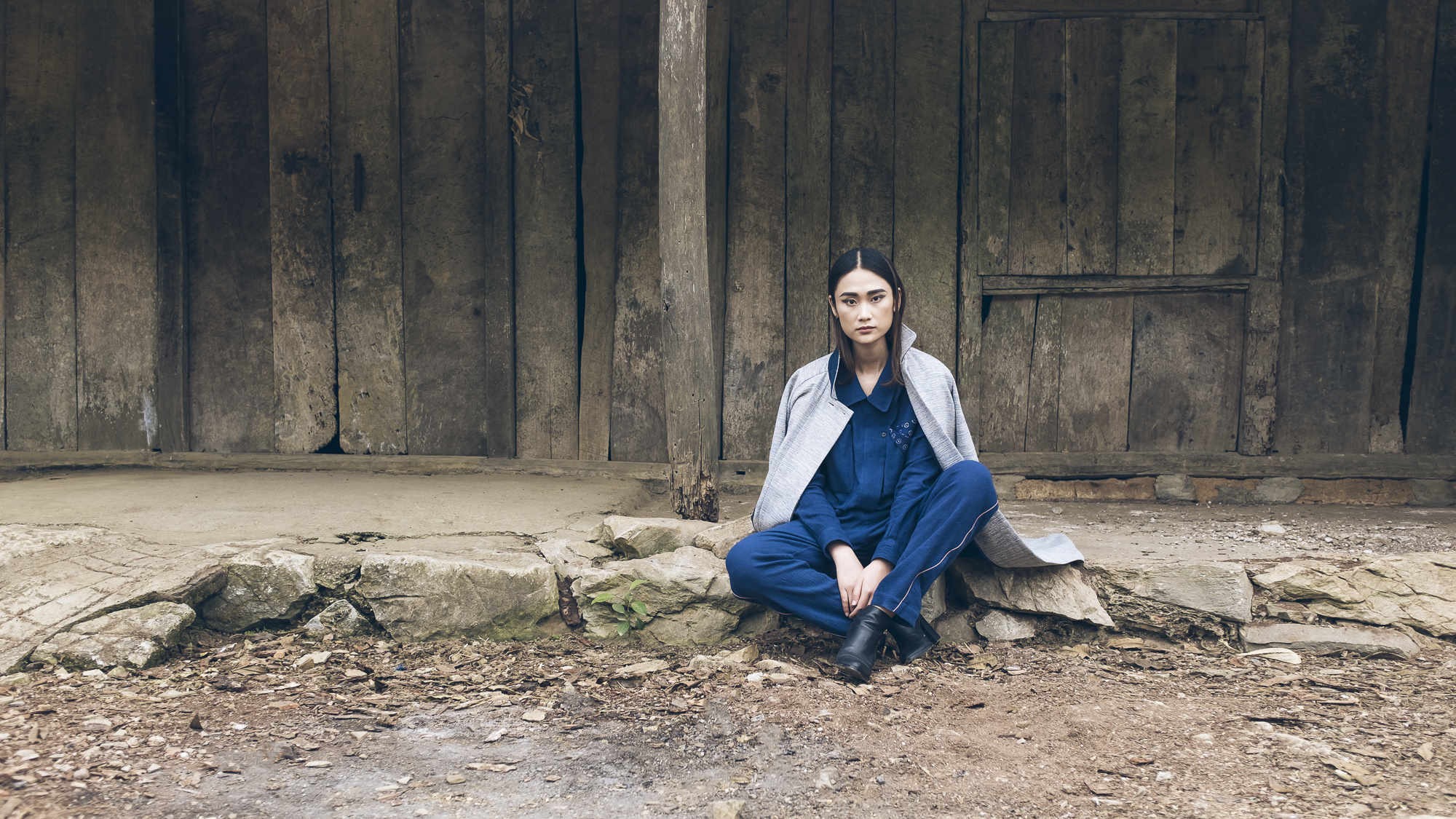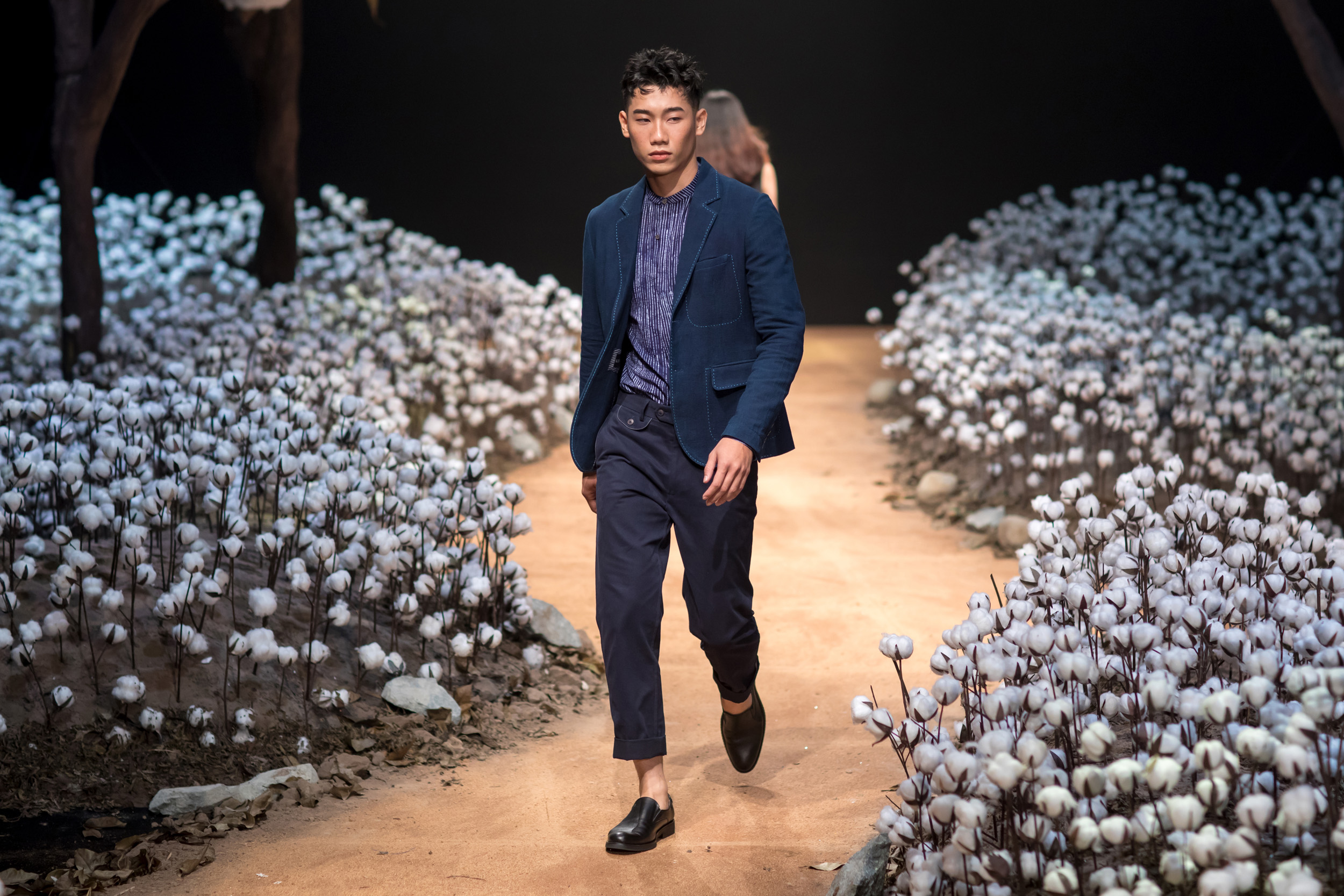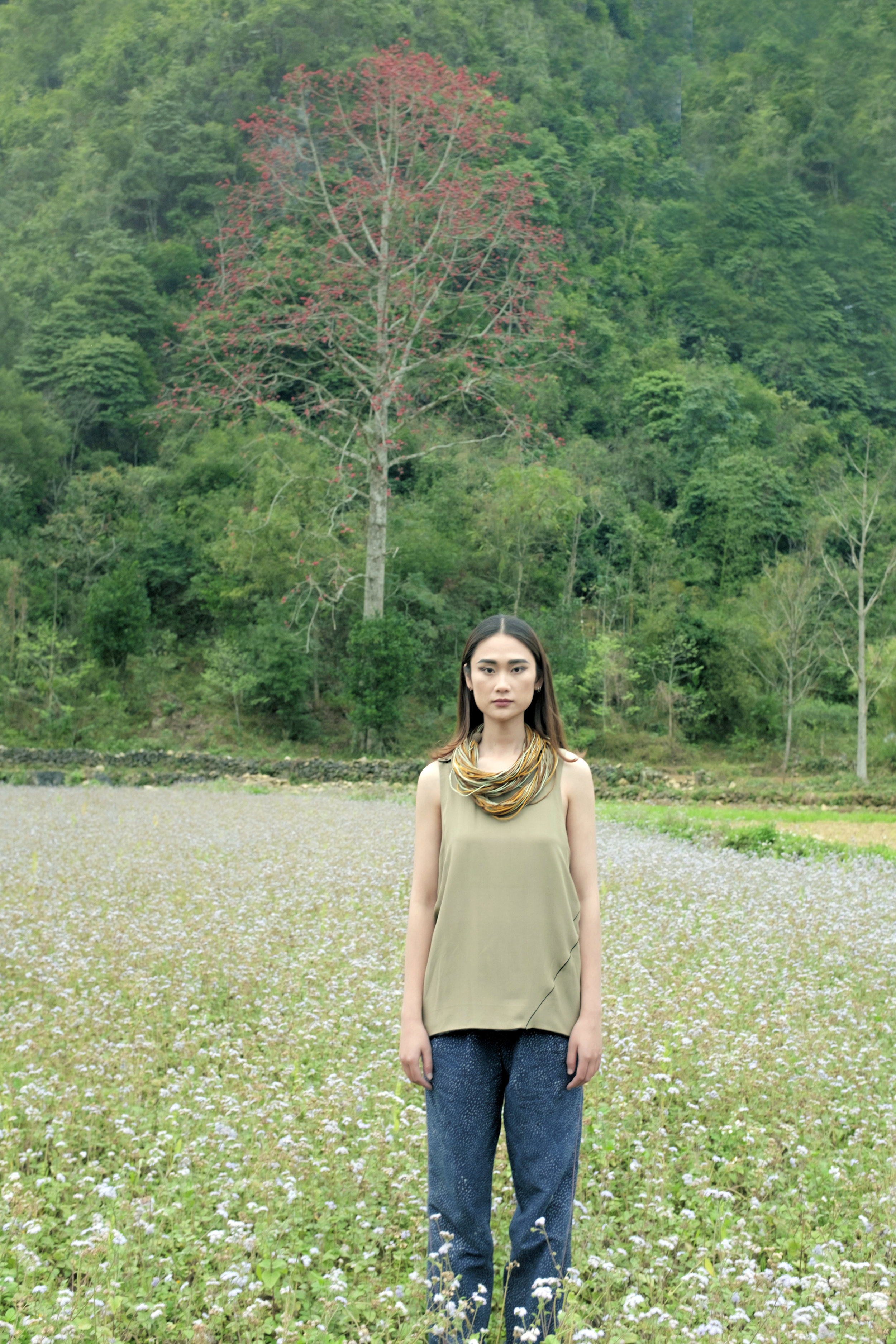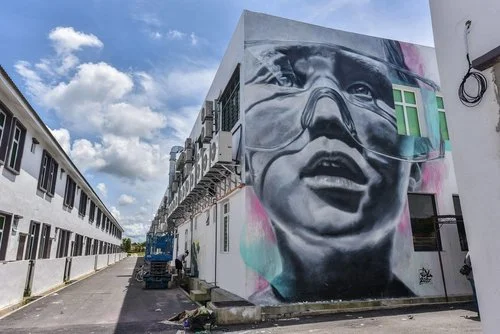Kilomet109 seamlessly blends traditional techniques with contemporary fashion.
You likely own clothing that was made in Vietnam (brands like Target, H&M, Gap, and Zara all manufacture clothing here). But there’s more than fast fashion coming out of this country. Fashion label Kilomet109 is leading the charge with traditional artisan techniques adapted for contemporary design. Bigger than a trend, they are setting the stage for a new, sustainable fashion movement across Vietnam.
After winding through narrow streets in a quiet northern section of Hanoi, we knocked on an unmarked door and hoped for the best. Taking off our shoes as we entered, we were greeted by people sitting at sewing machines and arranging textiles. Relieved, we knew we were in the right place.
We carried on upstairs to where designer, Vu Thao, and her family live. Sitting at the table with Thao and her husband, we drank a cup of tea, ate Mung Bean Cakes, and chatted for hours. Later on, we toured her museum-like racks of traditional clothing and her label, Kilomet109’s previous collections.
About six years ago, Thao decided to take the leap and started her own fashion label, Kilomet109. After two years of intense research Thao launched her first collection in 2012. Like every collection since, each piece preserved traditional artisan techniques while blending contemporary, functional, and attractive design. Her 2014 collection, SEEDS, marked her first hand woven “100% sustainable collection, [using] home grown fibers and natural dies. A – Z made by us from planning through the end.”
Early Days: There Was No Word For Design
“In Vietnam during the 80s and 90s we had few choices. We had to make our own clothes. Everybody developed self-made skills from parents and grandparents and others in the community. I grew up with that.” Despite “always having a really strong connection with textile,” the thought of becoming a designer never entered her mind. “Design wasn’t a viable career. You could make something, but you were a laborer or tailor. It was more about making, not about the idea generating of design. We actually didn’t have a word for that at all.”
A major turning point for Thao came in 2000, who was working at a magazine at the time. When “open policies in Vietnam were passed, it changed the whole scope of how Vietnamese dressed. Society was changing a lot and people started to pay attention to appearance [as a way to] express yourself.” It was then that she decided to return to school for fashion design. After graduating, she worked for other designers and also taught at a fashion school. Teaching her students about sustainable design inspired Thao to do it herself. “I knew Vietnam could be a leader of this movement [of sustainable design], and that I should be one of them.”
Named in homage to Thao’s hometown, situated 109 kilometers from Hanoi, Kilotmet109’s designs appear to be effortless, simple, and high quality. To be clear, simple does not imply boring or thoughtless—quite the contrary. Each button, color, and thread is a thoughtful decision; every decision is a negotiation between design, functionality, and traditional craft.
The art of Thao’s work is in naturally “weaving together the message of protecting local [craft] in a contemporary form.” She hopes her work will help Vietnamese people realize “we can use what we’ve got and transform it in a modern version. It’s not the fashion from the past, it’s the now fashion. It’s the future.”
Blending contemporary design with traditional artistry comes with its fair set of challenges. But, by forging strong relationships with the artisans themselves and working through issues of communication and process, Kilomet109 has not only gained global recognition, but has set the standard for integrity, quality, and collaboration between old and new.
The Design Process: Experiments, Shifting Mindsets, and Play
Thao is the sole designer at Kilomet109, but she works closely with artisans in nearby villages who have passed down their craft for generations. Collaboration, particularly with a language barrier (each of the villages near Hanoi has a different language), is a delicate art. “In the beginning [when I suggested new designs] they were quick to say no, it won’t work. They would do it, but without believing in it.”
The process of adapting the Batik technique to new designs
“Batik is a technique that I applied in our latest collection. I spent two weeks with the group of Blue Hmong observing six women sit around like we are, in the kitchen. They make designs of flowers and animals by looking at each other and doing the same thing. It takes so long to make one piece and they use five to ten tools for each one.
[At the end of our time there] I asked them to use only one tool, whichever one they liked. I gave them a simple sketch of geometry, lines and dots, and told them to play around with it. The young girls were okay trying that, and the older ladies just laughed. All of them thought this [exercise] was only for the moment, not to make to a design.
Later when I came back with the design for the collection, they couldn’t believe I used this work. They were shocked and thought ‘is this design from that day?’
To try and overcome this challenge, Thao spent more time in the village in order to better understand the subtleties of process and tradition. Quickly, collaboration improved. “When you are willing to spend time with people, the relationships are so much easier on both sides…they know I make an effort to work with their tradition…now, we really inspire each other. Sometimes I have ideas that are too ‘out there’. I can make experiments in the studio, but when it comes to cost and production, their input is really valuable.”
The biggest shift Thao observes is that “[the local artisans] are not saying no when I have designs. They ask for it! ‘What do you have next, what’s the next?’ Before it was [resistance] but now they talk about next idea, next collection, next project. It’s really nice to see.
Hanoi: A Village within a City
When a young woman noticed a glass button on Thao’s dress, she invited Thao back to her house in search of buttons handmade by her late father years ago. After hours of searching in a dark room, they found and admired the stunning collection. At the young woman’s request, Thao took home the buttons. “She said her father wanted the buttons to go to someone who loves them. Hanoi has these kind of surprises. Even for someone like me who’s lived here so long, you always find something that wows you.”
“There are so many hidden places where people are making things. It’s very helpful for my design. Whether it’s simple silk thread or hand make glass buttons, we can make them ourselves here. It’s a really wonderful thing that we still have here. It is like a village that exists within a city.
I’m so fortunate to live here and work in the countryside. Hanoi provides a great balance for my personal life and design. I love the speed of Hanoi and how it’s always moving.
When you live in the city you have to consider so many things – traffic, air, movement. So my design considers that. When I make a jacket, I have to think about how to get on a motorbike without the material bunching up. The city is so many things at once. Even the colors of Hanoi are really inspiring. It’s endless visually.”


We’re excited to watch as Kilomet109 continues to pave the way for fashion design in Vietnam. Shop their past collections here: http://kilomet109.com/shop/














